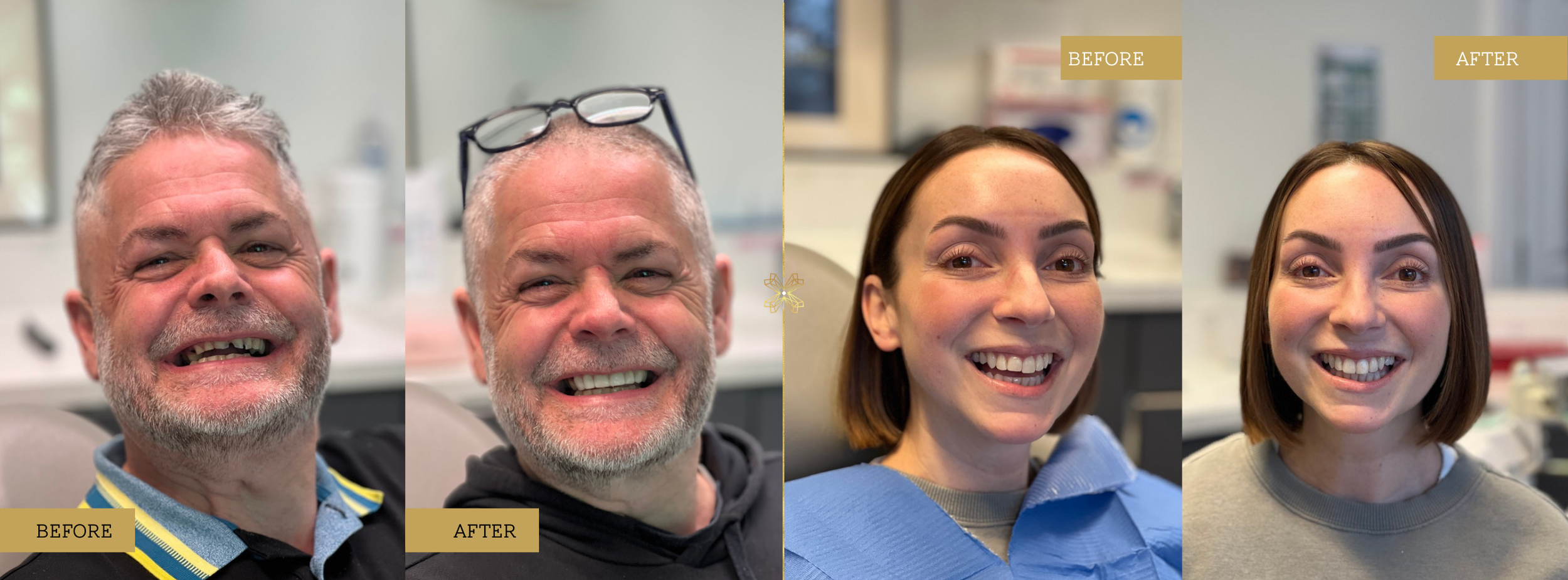Composite Bonding vs Veneers: Which Is Right for Your Smile?
If you’re considering a cosmetic dental treatment to enhance your smile, two of the most popular options are composite bonding and veneers. Both can achieve stunning results, but the right choice depends on your goals, budget, and long-term expectations.
Let’s break down the key differences to help you understand which treatment may suit you best.
Composite Bonding
What they’re made from: We use a tooth-coloured resin that is carefully sculpted directly onto your natural tooth. This is the same material used for our white fillings.
When they’re used: Ideal for fixing small imperfections - such as chips, cracks, slight gaps, or minor discolouration. It’s a quick and versatile option for subtle changes.
How long they last: Composite bonding can last several years but is more prone to staining and wear. Coffee, red wine, and smoking can dull its appearance faster than porcelain.
Preparation involved: Very little tooth preparation is required. The resin is applied directly to the tooth surface, making this a conservative and reversible option.
Cost consideration: More affordable, quicker to complete, and a great entry-level cosmetic treatment. At the Lytham Dental Clinic, our edge bonding starts from £215, and composite bonding starts from £350.
Veneers
What they’re made from: Crafted from porcelain or ceramic, veneers are ultra-thin custom-made shells that are bonded to the front of your teeth for a long-lasting transformation.
When they’re used: Best suited for a bigger smile makeover. Veneers can dramatically change the shape, size, and colour of teeth, making them perfect for covering stubborn stains, correcting uneven teeth, or giving a uniform look.
How long they last: Veneers are highly stain-resistant and durable. With the right care, they can last a decade or more, making them a more permanent investment.
Preparation involved: A small layer of enamel (around 0.5mm) usually needs to be removed in preparation to fit the veneer, ensuring a natural, seamless result.
Cost consideration: More of a financial commitment, but they deliver a longer-lasting, high-impact transformation. Our Porcelain veneers start from £890.
Many patients are surprised to learn that edge bonding is actually a type of composite bonding, but with a more specific purpose. This technique focuses on the very edges of the front teeth. It’s most commonly used to even out worn or chipped edges, restore symmetry, or lengthen teeth slightly. It’s a subtle enhancement that can make a big difference in the overall balance of your smile.
Composite Bonding (Full Surface): Goes beyond the edges, covering more of the tooth’s surface to reshape, close gaps, or mask discolouration. It’s a broader treatment for more noticeable changes.
Which Should You Choose?
The decision between composite bonding and veneers comes down to how much change you want, how long you’d like the results to last, and your budget. Bonding is perfect for small tweaks, while veneers are ideal for patients looking for a long-term, dramatic improvement.
The best way to decide? Book a consultation with one of our dentists, who will assess your teeth and recommend the option that fits your smile goals.

